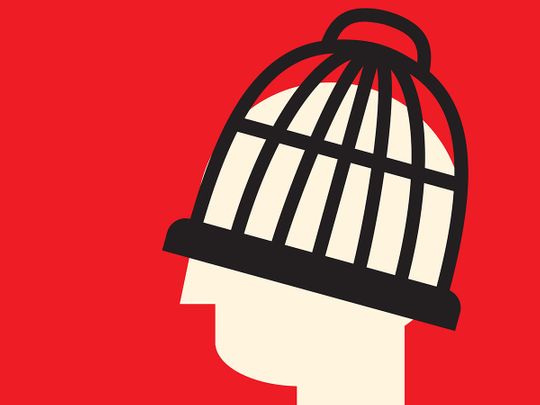
Almost every day, we think that we see the world as it is – its things, shapes and the shades of humanity that colour it. However, the reality is that all of us perceive and judge through lenses of preconceived notions or ways of thought that could be ‘errors’– also called cognitive biases. In a century marked by the wholesome shift towards inclusivity, diversity and celebrating our differences, it is now more important than ever to be aware of where exactly we may have some mental blocks that could be causing division, unfair judgments or choices.
“Daily, every person is exposed to so much data that needs to be processed by the brain - more information than the 300 million pattern recognisers that we have in our brain (the neocortex) can actually handle. Because of that the brain takes shortcuts, which are called heuristics or cognitive biases.” says Jana Habson, a psychologist and social therapist at Life Works Clinic, Dubai.
These shortcuts can then lead to faster decisions and other benefits but there are drawbacks.

Daily, every person is exposed to so much data that needs to be processed by the brain - more information than the 300 million pattern recognisers that we have in our brain (the neocortex) can actually handle. Because of that the brain takes shortcuts, which are called heuristics or cognitive biases.
“While cognitive biases are mental shortcuts that serve an adaptive purpose and can save time due to their efficiency, the risk of making a poor decision is significantly higher,” says Layal Hmaidi, psychology teacher at Dar Al Marefa private school, Dubai.
The way to overcome this is by cognitive de-biasing techniques, she says, the first step for which is making yourself aware of the different biases you may be unwittingly exercising on a daily basis. To tackle that first step of advice – here’s all the cognitive biases that you face decoded:
Seeing is believing: Availability bias
You watch the news intently every morning. Unfortunately, this week has seen more than one accident involving cars, and the scenes of the events are fresh in your mind. Unconsciously, you can begin to assume that car crashes are a very common occurrence.
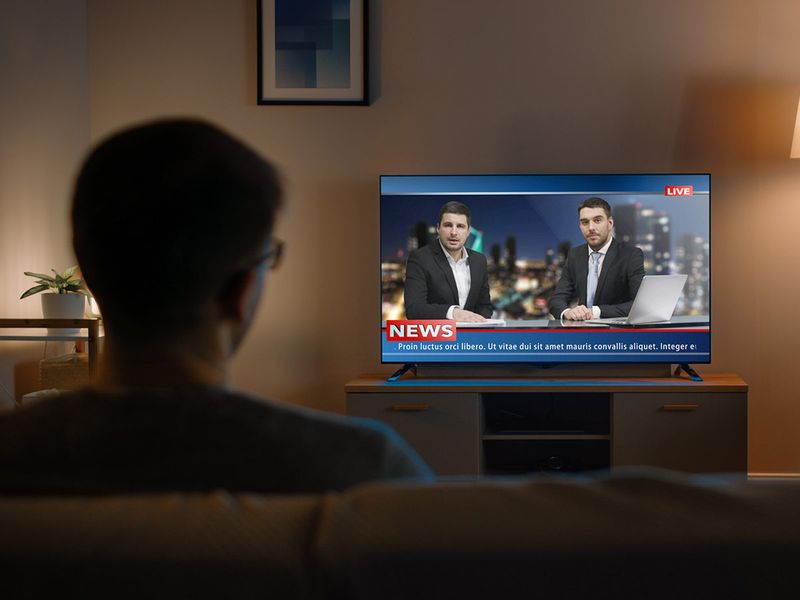
The reality is that you have more memories of plane crashes in the recent past, and so your brain can think of such examples more readily. This is also known as availability bias – where an event may seem more common just because you have been exposed to it more.
Hmaidi says: “The individual overestimates the likelihood of an event happening due to its greater 'availability' in their memory.” This happens partially due to the limitations of our memory, where drawing on the easily available information in our mind helps us to make quick judgements and decisions.
Our unconscious bias lies in us thinking that if something is recalled, that makes it more important or present than alternatives that are not as easily remembered – and we continue with what first comes to mind. It can affect everyone – from a manager who evaluates the performance of their employee based on recent memories, to even doctors sometimes, according to a 2020 Japanese study published in the Internal Medicine journal of the Japanese Society of Internal Medicine.
So, the next time, when information comes to mind immediately, question if that’s the full picture.
How to combat hate: Confirmation bias
A person believes that left-handed persons are more creative than right-handed ones. When this individual comes into contact with someone who is both left-handed and creative, they place a higher emphasis on the "evidence" that supports their existing beliefs.
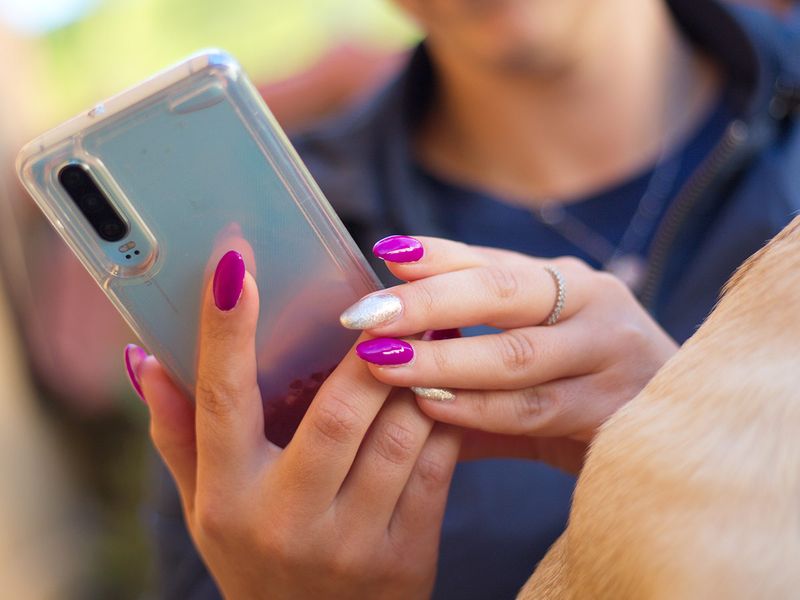
We search for information that reaffirms our beliefs and discount information that’s contrary to our hard-lined notions and preferences. But once you recognise this bias, it might burst your bubble and alter your worldview.
“It is called confirmation bias when a person is more likely to accept references or conclusions that are consistent with his or her previous beliefs about something,” says Habson, adding that it is one of the most common types of cognitive bias today.
Confirmation bias has an impact on the way we use the information and interpret it. This might also explain the mechanism behind people believing in racial stereotypes. Confirmation bias creates echo chambers - environments where our information and opinions around us reflect and reinforce our own.
Does this sound familiar? Echo chambers are widely present on social media, where our news stories on social media are tailored through our personal information. Our online choices are made for us. Therefore, the news and information we receive are based on our preferences. We are not fed an objective and diverse array of information on social media - making us vulnerable to fake news and sensationalism.
If we want a more cooperative and inclusive world, we have to digest the cold hard truths that differ from our preconceptions.
The invisible gorilla: Inattentional blindness
You’re cruising down the highway, keeping an eye on your speed, constantly checking the rear view mirror and the ongoing traffic. The road has your full attention, but you fail to notice when a car swerves into your lane and end up having a collision.

This is known as inattentional blindness, and it’s more common than you think. In this scenario, an individual fails to recognise salient objects. An abundance of visual stimuli can trigger this temporary unawareness.
“Researchers have discovered a phenomenon called inattentional blindness, which shows that if we do not pay close attention, we can overlook even the most obvious of situations,” says Habson.
The most famous experiment demonstrating intentional blindness is the ‘invisible gorilla test’ created by Dr Christopher Chabris and Dr Daniel Simons at Harvard University. In this experiment, participants were asked to observe a video of people playing basketball and count the number of throws and passes.
After the video ended, the viewers were asked if they saw anything unusual. Most of the participants failed to notice a person in a gorilla suit stroll by. The observers were so focused on the task that they were oblivious to a gorilla passing through.
So the next time you’re watching a film, perhaps a movie set in ancient Rome and fail to notice a major blooper, an anachronistic plane flying in the background of a gladiator scene, you can blame it on inattentional blindness.
Gamblers’ fallacy
If the head lands face up, say, four or five times, most people will believe that the coin will land on the tails side next time, occasionally even arguing that the repeated “heads” coin increases the likelihood of a future “tails” coin.
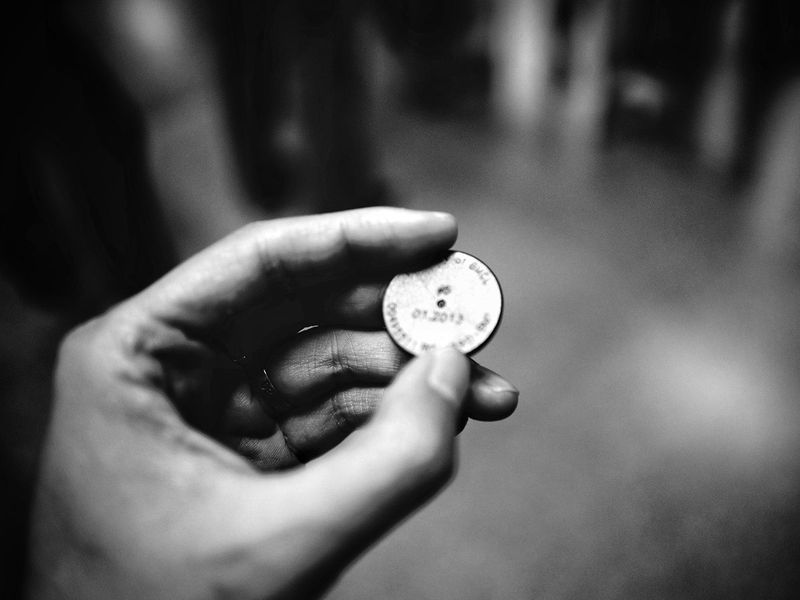
“This occurs when an individual believes that a certain random event is less likely or more likely to happen based on the outcome of a previous event or series of events. This line of thinking is incorrect since past events do not change the probability that certain events will occur in the future. For example, if you lost a bet five times, then in the next bet you may think "I will win this one because I lost many times previously", says Mandeep Jassal, Behavioural Therapist at Dubai-based Priory Wellbeing Centre.
This fallacy or bias is common among gamblers and has caused people to lose their fortune. But this isn’t just found in casinos - it exists in everyday life. Take the previous example of car crashes, people who tend to fly a lot think that a plane crash is awaiting them.

This occurs when an individual believes that a certain random event is less likely or more likely to happen based on the outcome of a previous event or series of events. This line of thinking is incorrect since past events do not change the probability that certain events will occur in the future.
Habson says: “The gambler's fallacy is the mistaken idea that the outcome of one event will have an impact on the outcome of another event, whereas, in reality, the two events are completely independent. When people assume that the repeated occurrence of one thing must necessarily result in the repeated occurrence of another, they are committing the gambler's fallacy.”
Anchoring bias
A customer comes to the car dealer and gets an initial price of a car which is Dh100,000. A week later the buyer comes again to the car dealer and gets a new price of Dh80,000. Based on the first price, the client concludes that he got a great deal. Except the price is still higher than the market value and car dealers in the same location are offering Dh70,000.

Hmaidi says that the initial price of the car becomes the focal point in decision making: “It is a cognitive bias whereby an individual relies too heavily on the first piece of information given - the 'anchor' - to make subsequent decisions.”
Whenever people are making decisions they often get influenced by a particular reference point or anchor. People become fixated on the first piece of information they learn, and this impacts their decision making. Anchoring bias is mostly present when we are purchasing or buying an item.
Dr Jassal says: “This is the tendency to be overly influenced by the first piece of information we hear. For example, a psychologist’s first impression of a client often creates an anchoring point and sometimes incorrectly influences subsequent diagnosing.”
Comfort zone: Familiarity bias
You are partial to a specific brand of clothing or shoe – you go to the same store every time, and you take the same route to get there.

A phenomena similar to our ‘comfort zone’, this is when people tend to develop a preference for things usually because they are familiar with them, says Dr Jassal.
Hmaidi says, “For example, the more frequently exposed you become to advertisements of the newest perfume or burger, the more familiar you become with them, and in turn the more likely you develop a preference for them in comparison to other competing stimuli.”
It could sound innocuous – why not stick to what I know? The reality is that you can then make choices based off what is simply known to you rather than what is actually better for that decision. For example, as an investor, you may turn to putting your money in a familiar institution when facing a sudden choice – at the risk of losing money or further diversifying your portfolio.
Forgetting ‘Sonder’: Attributional biases
You see someone at work or school, being abrasive, curt and withdrawn – causing you to think that they could be an unpleasant person. However, it might be that they are undergoing a crisis or difficulty at home that is causing them stress and affecting their personality.

This is the fundamental attribution error – where one is more quick to attribute reasons to a personal rather than situational factors.
Studies have also found that people from individualistic cultures (such as in the United States, Canada, Australia) are more likely to focus on their personal attributions than those from community and family-centred societies (eg – India, Korea). In fact, a study back in 1984 by Miller published in the Journal of Personality and Social Psychology that asked children and adults in both India and the United states to explain the negative actions of others. For the older children and adults, Indians made more situational attributions for the behaviour, while Americans made more personal attributions.
This bias also occurs especially when perceiving the behaviors of others. This is also called Actor-observer bias – you tend to make more personal attributions for the behaviour of others than we do for ourselves, and to make more situational attributions for our own actions than for the actions of others. It’s easier to blame someone’s character for their actions, without looking at the underlying situational or societal reasons for their behaviour. For ourselves, we can probably think of excuse after excuse.
A solution? ‘Sonder’, a word invented by the ‘The Dictionary of Obscure Sorrows’ and has since gained popularity - refers to the realisation that each street passerby is living a life as vivid and complex as your own.
Self-serving bias, coming up next, is a common type of attributional bias -
The Blame Game: Self-Serving Bias
You successfully receive a job offer, the self-serving bias prompts you to attribute this to your merits, yet when you fail to receive a job offer, the same bias prompts you to blame this failure on external factors such as 'the interviewer was biased'.

Hmaidi explains, "Self-serving bias is a cognitive bias whereby an individual tends to give themselves credit for successful outcomes while attributing their failures to external factors.”
Blaming external forces when life doesn’t go our way is quite common and we’re all guilty of it. But it also evades us from taking accountability for our actions. Self-serving is like any other bias. They cause a specific error in our thinking and results in impaired decisions and judgements.
“When someone has a self-serving bias, they have the frequent practice of claiming credit for positive occurrences or outcomes while blaming outside forces for unfavourable events or outcomes. This can be influenced by a variety of factors such as age, culture, clinical diagnosis, and others. It tends to be found in large numbers throughout a wide range of populations,” says Habson.

Self-serving bias is a cognitive bias whereby an individual tends to give themselves credit for successful outcomes while attributing their failures to external factors.
Habson explains that self-serving bias also depends on social factors. Self-serving bias is more prevalent in Western culture. Countries like the US, and Canada are individualistic in nature, and place a greater emphasis on personal achievement.
Self-serving bias also acts as a defence mechanism to protect your self-esteem. Attributing positive things to themselves and negative things to external factors. This reinforces a positive self-image.
The just-world hypothesis: Victim-blaming bias
You might read online about a sexual crime against a woman, and wonder what she was wearing that day, or whether she’d been out late at night, especially with members of the opposite sex.
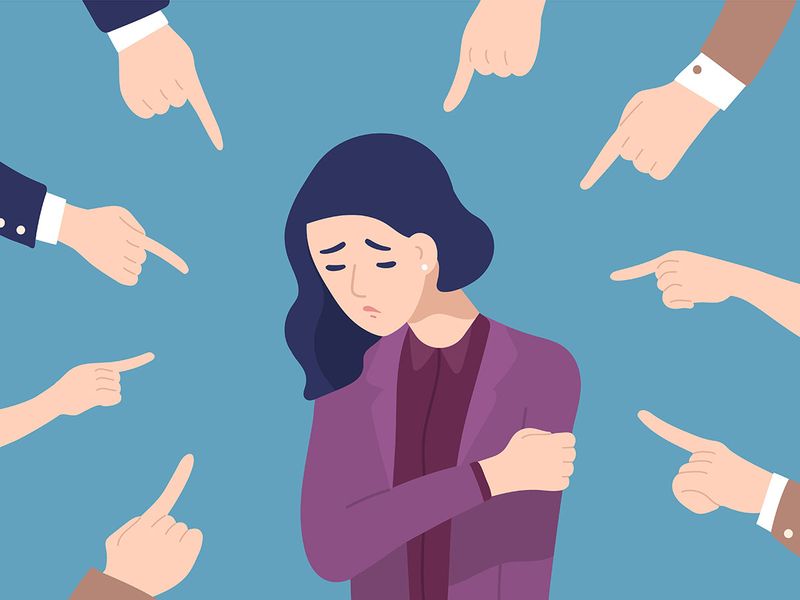
This is one of the most socially significant biases – one that can cause classism, racism, misogyny, and more. The ‘Just-world hypothesis’, according to the American Psychological association, is the idea or belief that the world is an orderly and fair place where what happens to people is ‘generally what they deserve’, and attributes reasons accordingly.
This can take on unpleasant forms such as blaming a victim for their actions rather than the perpetrator, and criticising marginalized groups – such as the homeless – for their own situation. A 2010 study on adolescent attitudes to victims of bullying published in the British Journal of Educational Psychology found that more agreement with the ‘just-world hypothesis’ was linked to more victim derogation and harsher social attitudes.
Studies have also linked these with stigmatising those with mental illness, and with justifying social inequalities. In fact, an additional study on ‘roles for belief in a just world and social dominance orientation’ 2007 published in the European Journal of Social Psychology showed that those with beliefs in a just world were more likely to view a high status individual as being more competent than a low status individual – reinforcing class divisions.
The antidote? To dwell more on the situational, societal and historical factors that have led to social inequalities.
Survivorship bias: “No one remembers who came in second”
You’re scrolling through Instagram, coming across the airbrushed photos of influencers, your friends and family – sometimes feeling inadequate at the gleaming perfection of lifestyles, outfits and surroundings. However, the social media account fails to capture their everyday realities, or the effort taken to portray their lives in a certain way, leading you to think that is reality, instead of what is shown to you after a selection process.

Habson explains, "This bias is when we concentrate on individuals or things that have survived some sort of selection process, we neglect those who have not, generally because of their lack of visibility. “
This has the potential to lead to some incorrect conclusions in a variety of ways, she adds. In the annals of history, historians tend to study organisations that still exist or whose records are available as opposed to those who may not have left much traces. Back in World War II, the US military recommended adding armour to the most-hit areas of aircrafts during an evaluation, considering them the most vulnerable. The survivorship bias?
The military was only considering aircraft that had survived the missions, and could not assess the ones that had been shot down. This meant that the most-hit areas were actually the areas where the plane could take damage and still keep flying. Abraham Wald, statistician at Columbia University, considered this and recommended that the areas least peppered by bullets be reinforced. Similarly, performance statistics of companies in an area can fail to include those that have shut down as they don’t exist anymore.
So, the next time you feel that the evidence points to a certain conclusion – that music was better in older times instead of looking at how the very best music remains today, or a certain influencer leads a happy life – take a moment to think about what you may be missing, and the iceberg’s underwater form.
Debiasing your life
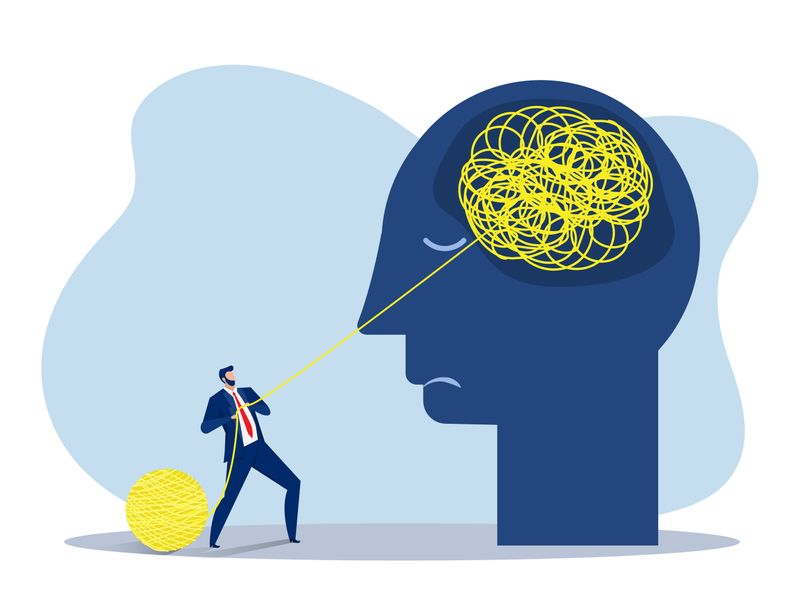
From being stuck in the endless ‘echo chambers’ of social media – where your likes, interests, and opinions are reflected back at you through the commercial engagement-generating algorithms, to myriad untrustworthy sources, it is certainly hard to maintain a diversely informed outlook these days. Which is why it is important for us to reflect on what biases colour our daily perceptions, actively combatting them when we can to ensure fair decisions and judgements.
Jana Habson, licensed psychologist, social therapist at Dubai-based Lifeworks clinic says: “It is critical to become conscious of our own biases in order to make the best judgments possible, both personally and professionally.”
The key, Layal Hmaidi says, IB psychology teacher at Dar Al Marefa private school says, lies in cognitive de-biasing techniques – firstly, becoming more aware of your biases.
A research study led by Anne – Laure Sellier (2019) reported that cognitive de–biasing training reduced the impact of cognitive biases on her participants by 29%.
1. Being aware of what biases you may be facing
There are numerous cognitive biases that you may face on a daily basis, and making yourself aware of them is the first step.
2. Mindfulness:
“Because you are more prone to succumb to your prejudices when you are under pressure, you could practice stress-relieving techniques and mindfulness-building techniques such as focused breathing,” says Habson.
Some tips by the famous Vietnamese Buddhist monk Thich Nhat Hanh, author of ‘The Miracle of Mindfulness’ , the landmark work that normalised and spread the idea -
3. Seeking multiple perspectives:
Hmaidi says, ‘”To make more informed choices, consider the influence of factors such as emotions, individual motivations, social pressures, over confidence or self-interest on your daily decision-making process.”
As Atticus Finch famously says in the novel, ‘To Kill a Mockingbird’, “You never know a man until you stand in his shoes and walk about in them." You can consider your own life experiences from the perspective of the person being stereotypes, and Habson has specific advice for doing this.
You never know a man until you stand in his shoes and walk about in them.
“If you want to learn more about those experiences, you can do so by reading or watching content that discusses them, or by directly interacting with members of those groups,” she says.
Seek advice, feedback, and perspectives of diverse individuals to find potential cognitive biases within your own thinking and decision-making process.
4. Introspection
Habson says,”Take implicit association tests or engage in other forms of self-analysis to discover and recognise your own prejudices and preconceptions.”
5. Slowing down
Habson recommends slowing down and pondering before interacting with people from specific groups to reduce reactive actions. This is as cognitive biases or heuristics are especially designed to operate when making decisions quickly – for example, quick judgements of people at first glance without taking into account situational factors.
She adds, “Consider examples of positive people from that stereotyped category, such as public figures or close friends.”
6. Critical thinking
Habson says, “Critical thinking helps in the elimination of bias, and specific critical thinking strategies can be applied in a business setting to achieve success. In order to overcome bias, the first and most successful method is to rely on objective facts and statistics. Look for real evidence that is objective, quantitative, and backed up by a large number of independent or outside sources.
“Upon identifying factors that impact your decision-making strategies, focus on actively challenging these biases. “











